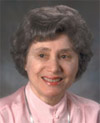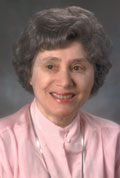 NIH Director Francis Collins recently named Larry Tabak as the NIH principal deputy director. Raynard Kington previously held this key position.
NIH Director Francis Collins recently named Larry Tabak as the NIH principal deputy director. Raynard Kington previously held this key position.
Over the years, I have worked closely with Dr. Tabak in many settings, including the Enhancing Peer Review initiative. A biochemist who continues to do research in the field of glycobiology, he is a firm supporter of investigator-initiated research and basic science. He is also a good listener and a creative problem solver.
Dr. Tabak, who has both D.D.S. and Ph.D. degrees, has directed NIH’s National Institute of Dental and Craniofacial Research for the past decade. In 2009, Dr. Kington—who had stepped in as acting director of NIH following the departure of Elias Zerhouni—tapped Dr. Tabak to be his acting deputy. Dr. Tabak’s achievements included playing an integral role in NIH Recovery Act activities.
Given the challenging issues that the principal deputy director often works on, Dr. Tabak’s experience—from dentist and bench scientist to scientific administrator—clearly provides him with valuable tools for the job. His experience as an endodontist may be particularly useful in some situations, allowing him to identify and “treat” potentially serious issues.


 Since I first wrote about the death of former NIGMS director Dr. Ruth Kirschstein, plans have progressed for a daylong commemorative event on Monday, May 17, at NIH. The program will include several remembrances as well as scientific presentations and posters by recipients of the Ruth L. Kirschstein National Research Service Award.
Since I first wrote about the death of former NIGMS director Dr. Ruth Kirschstein, plans have progressed for a daylong commemorative event on Monday, May 17, at NIH. The program will include several remembrances as well as scientific presentations and posters by recipients of the Ruth L. Kirschstein National Research Service Award. We launched the Feedback Loop blog about six months ago. What do you think so far? You can
We launched the Feedback Loop blog about six months ago. What do you think so far? You can  and
and  We were all very sad to learn of the death of Ruth Kirschstein, M.D., last evening. She will be deeply missed here at NIGMS, NIH, and beyond.
We were all very sad to learn of the death of Ruth Kirschstein, M.D., last evening. She will be deeply missed here at NIGMS, NIH, and beyond.